What are Passive Houses? Efficient buildings? Why are they the future? Our planet has been suffering from global warming for years. Climate change has become more than evident in recent years. Today, it is essential that we take care of the planet. The construction of buildings must also contribute to this.
The last revision of the Technical Building Code (CTE) in our country was in 2019. It was later adapted to European regulations. Among others, this revision indicates that from 2020 the construction of new buildings must comply with the Nearly Zero Energy Buildings (NZEB) regulations. These buildings have a high level of energy efficiency and a low energy demand, which is mostly covered by renewable energies.
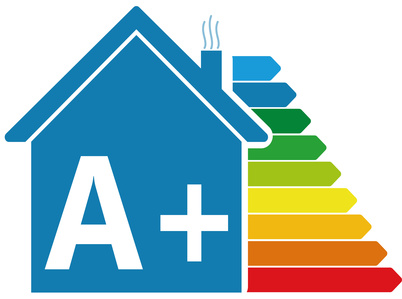
NZEB versus Passive House
One step further than a Near Zero Energy Building are the so-called Passive Houses. The main difference between certified Passive houses and Near Zero Energy Buildings is the level of demand for heating and cooling. NZEB regulations specify that a building cannot consume more energy for heating/cooling than 40 to 86 kWh/m²·year (depending on the climatic region). Passive House compliant buildings cannot exceed 15 kWh/m²·year, wherever the building is situated.
It is, therefore, clear that Passive Houses have a significantly lower energy demand than Near Zero Energy Buildings. The heating and cooling bill will, consequently, be greatly reduced. Comparative studies have verified that the reduction in energy consumption of a Passive House compared to an NZEB can be up 85%. In addition, a Passive House building has a certificate that verifies that it really meets the requirements. It is based on real tests carried out during and after construction.
For this reason, at ZEST Architecture we are in favour of going one step further in terms of the energy efficiency of the buildings we design. We prefer not to limit ourselves to the NZEB regulations and, whenever the client wishes, we are happy to build buildings that comply with Passive House standards. This, in turn, reduces the building’s energy bills and benefits the client.
What is the PassivHaus standard?
The international Passive House standard is a benchmark for quantifying energy efficiency, comfort and indoor air quality in the construction of buildings with very low or zero energy consumption. It is a performance based standard (which means you either pass or fail). In some cases, Passive House compliant buildings can be constructed entirely without heating or cooling installations.
The entity that regulates and grants Passive House certificates is the Passive House Institute (PHI). This is an independent research institute founded in Germany in 1996 by Dr. Wolfgang Feist. The institution has played a crucial role in the development of the passive house concept. It is the only certificate with international recognition in terms of energy standards in construction.
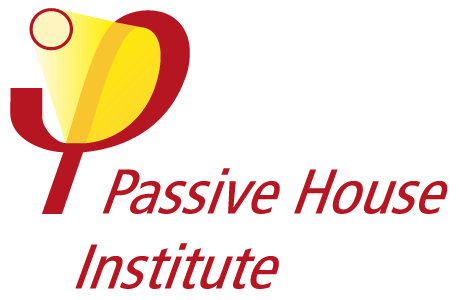
The criteria for a Classic Passive House are:
- Heating energy demand inferior to 15 kWh/m²·year
- Cooling energy demand inferior to 15 kWh/m²·year
- Primary Energy Demand (PER): 60 kWh/m2year
- Airtightness n50 inferior to 0,60 renovations/hour.
A building that generates a minimum of 60 kWh/m2·year using renewable energy is certified a Passive House Plus. A building that generates at least 120 kWh/m2·year is certified a Passive House Premium.
The main criteria for building a Passive House building are as follows
- High level of thermal insulation in the envelope
- High-performance windows and doors
- Absence of thermal bridges
- Air tightness
- Mechanical ventilation with heat recovery
- Solar protection of the openings also contributes to reducing the building’s consumption
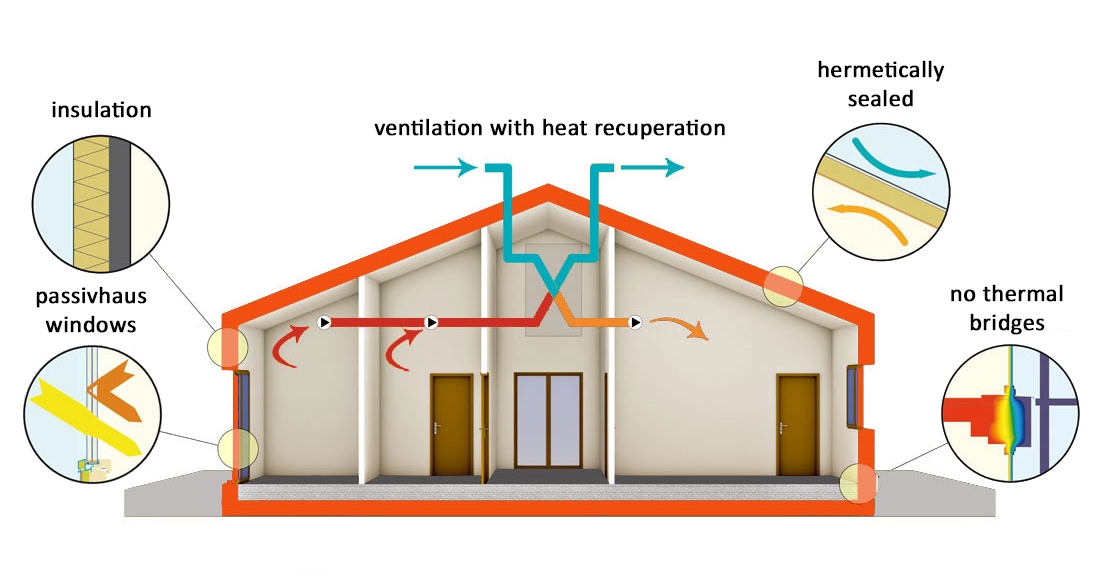
Can I open the windows in my Passive House?
A common misunderstanding is that in a Passive House the windows cannot be opened. In a Passive House there is a mechanical ventilation system that renews the indoor air to ensure the healthiness of the air for the occupants, eliminating excess humidity, CO2, bacteria, bad smells, etc. But this system does not prevent a user from opening a window if he wants to. It is not convenient or necessary to open the windows when the heating or cooling is being used. However, you can of course open the windows, especially during the mild months of spring or autumn, which is when the air conditioning system is working the least.
Renewing the indoor air of a building is always necessary and essential. In the case of a Passive House, the advantage is that this process is done automatically and in a controlled manner and does not depend on the action of the users.
In addition, another advantage of having a mechanical ventilation system is that it has a heat recovery system. This system has two air circuits: one that extracts air from the home and the other that brings it in. These two air circuits pass through a heat exchanger, which means that in winter the hot air extracted heats the cold air entering, while in summer the cold air extracted cools the air entering.
Having your windows closed and having such an airtight envelope also provides amazing acoustic advantages. This means that you won’t be bothered by street and traffic noise anymore.
How do I get a Passive House certificate?
A building’s Passive House rating is awarded by a certifier approved by the Passive House Institute. In order to obtain this certificate, which is obtained at the end of construction, the Passive House criteria must already have been applied in the initial phase of the project.
The development of a building that complies with passive building standards starts in the concept phase of the project. Certain design criteria must be taken into account from the beginning. Some of these criteria are:
- Solar protection of the openings
- Solar orientation of the building
- Size and position of the openings
- Building envelope materials, among others
An official Passive House designer will validate the design through a series of checks. They will check the envelope, the installations and the energy consumption of the building using official software.
Co Govers, the founder of ZEST Architecture, is a qualified Passive House designer. Therefore, the designs of our buildings are always developed based on criteria for efficiency and energy savings.
During the construction of a Passive House building, a series of tests are carried out while the building is under construction. One of these is the Blower Door test which verifies the airtightness of the building, following strict guidelines.
Once construction is complete and the various tests are passed, the building will be awarded the official Passive House certificate.
ZEST Architecture and Passive House
ZEST Architecture always designs buildings that are sustainable, energy efficient and comfortable for their users. For this reason, we pay a lot of attention to solar orientation, to the relationship with the surroundings, to the choice of materials, etc.
Rammed Earth House
A good example is our Project for a house situated in an olive grove. Although this house will not be certified as a Passive House, it has been carefully designed to follow the Passive House design criteria. The house is in a location with stunning views. It needed to be mostly on one floor, and the plot was very narrow. So, in the end, we adjusted the shape to have an almost perfect climatic orientation with great views. We also positioned the house to catch the cooling Summer breeze coming from the West.
For ZEST the choice of sustainable materials is also crucial, even though this is neither required for an NZEB nor for a Passive House. We look at the CO2 footprint of materials, but also at their provenance. In this case we worked with a timber frame construction, which was prefabricated off-site. The structure was assembled in large panels in a factory under controlled working conditions. They were then transported to and assembled on-site. Some of the construction materials we used are classified as “Kilometer 0” as they came from the site itself. A perfect example of this is the earth from the excavation of the pool and foundations. We used this earth to build a long rammed earth wall that runs through the entire house. Read here about how this is done.
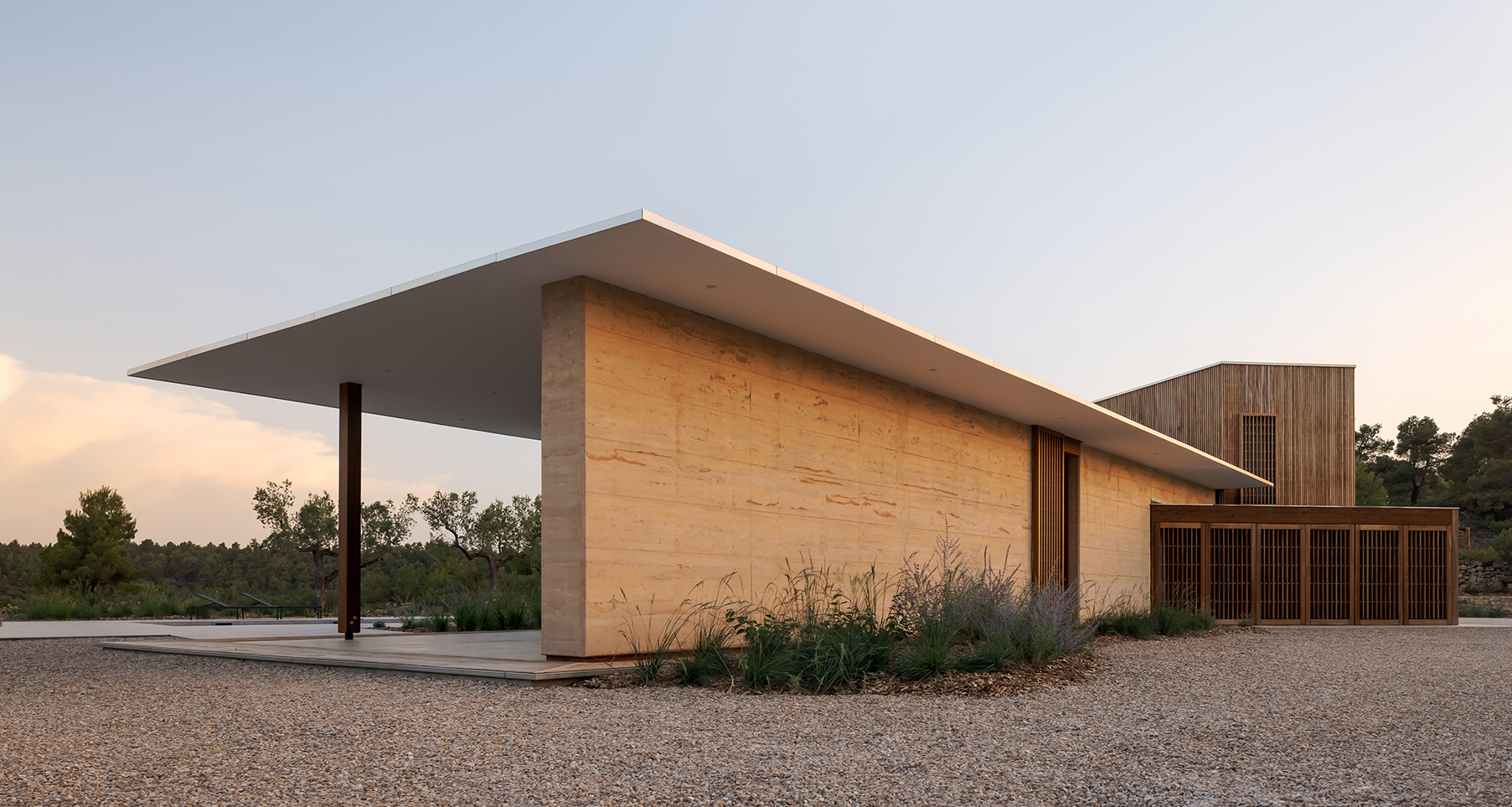 Photo of completed house
Photo of completed house
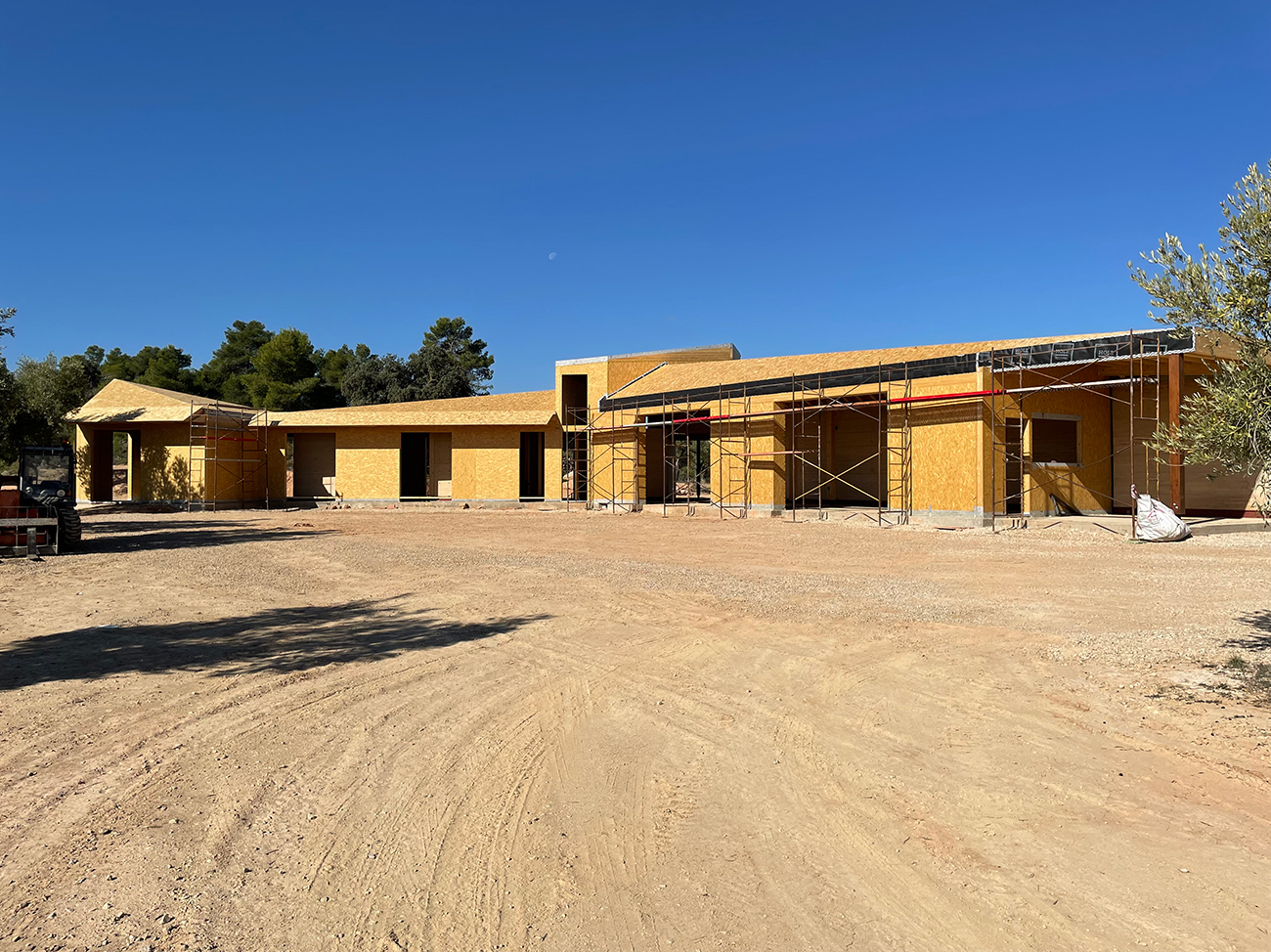
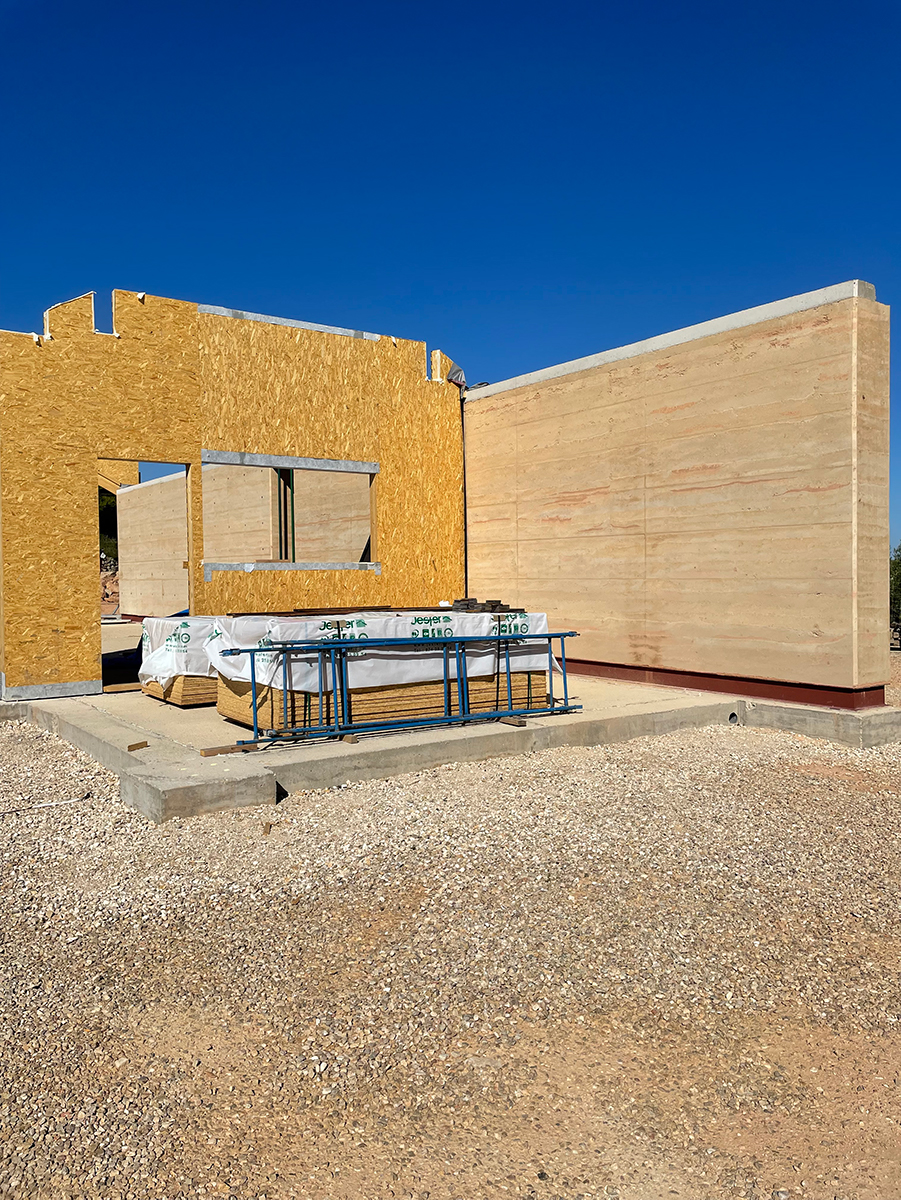
Photos of the prefabricated timber-frame house under construction
Z1 House
The Z1 was born out of the growing demand for more affordable, custom-made homes located in a wide variety of locations and with a reduced construction time. ZEST considered it necessary to create a housing project that, without giving up the highest quality standards, could be a passive, prefabricated house and also adaptable to any terrain.
With these premises, our Z1 House was born. It is a home designed down to the smallest detail and with options to adapt the finishes, layout and size.
This is how our Z1 House was born. It is designed in beautiful detail yet is adaptable and has the option to customize both distribution and size.
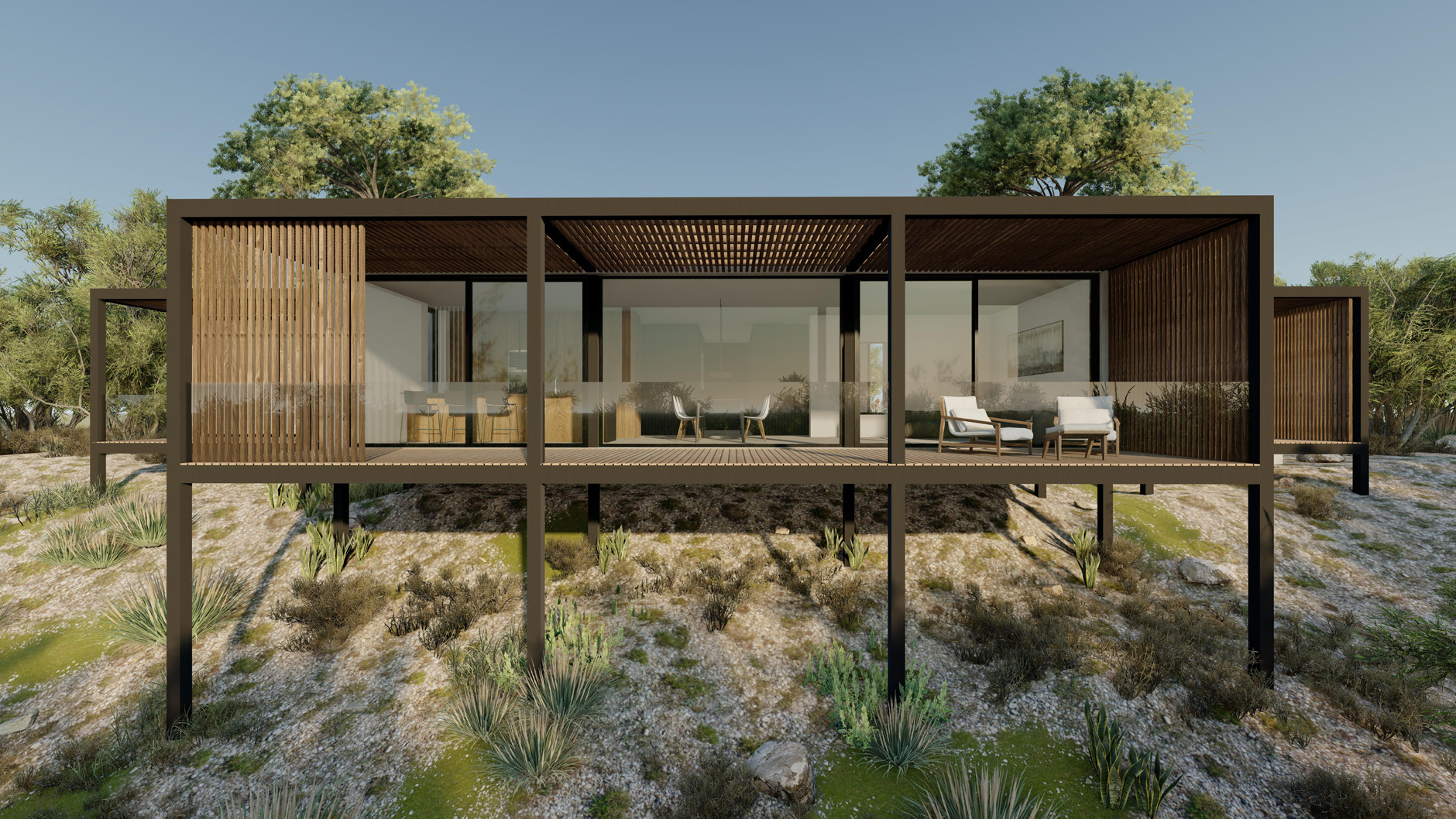
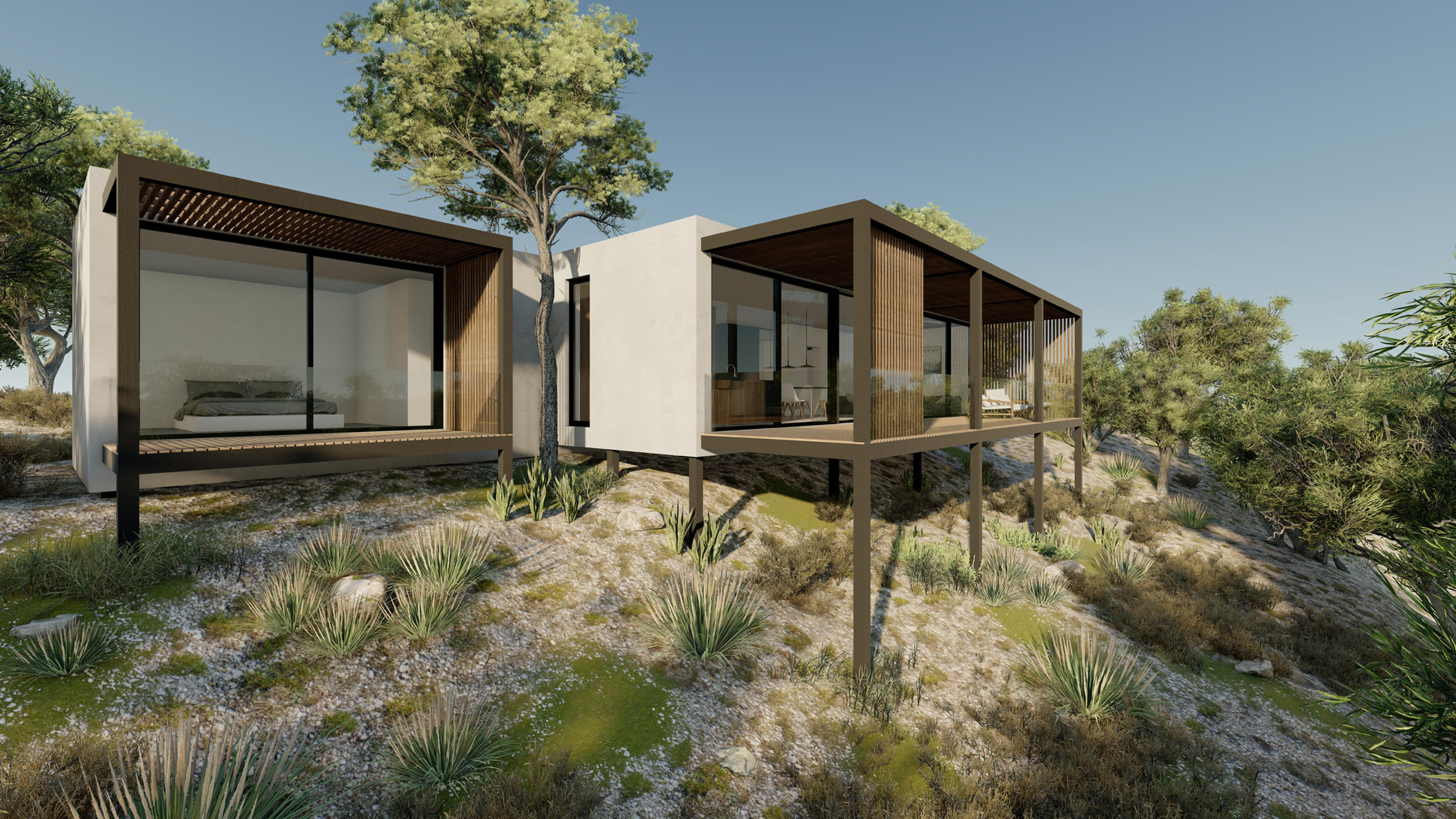
Visualisations of the Z1 House
How is the Z1 Designed?
Z1 is designed as a single-storey house with a timber frame structure on pillars. This makes it adaptable to any terrain, slope and orientation. Depending on the version chosen, the façade finish will be either SATE or a combination of SATE and ventilated façade clad in wood. The extreme simplicity of the design has been made possible by a very strong conceptual design. The main living spaces are distributed in an open-plan space, with maximum contact with the outside and the views. Slatted timber overhangs and vertical shutters provide maximum shading flexibility throughout the year.
All variations of the Z1 have been designed according to Passive House standards and can be certified as Passive House if so desired. Click here to read more about our Z1 House. When a client wishes, the entire procedure is carried out to obtain the Passive House certificate for the building. It includes everything from preliminary design to completion of the work and obtaining the certificate. At ZEST we have a certified Passive House designer and we have the support of other trusted professionals to carry out the entire procedure.
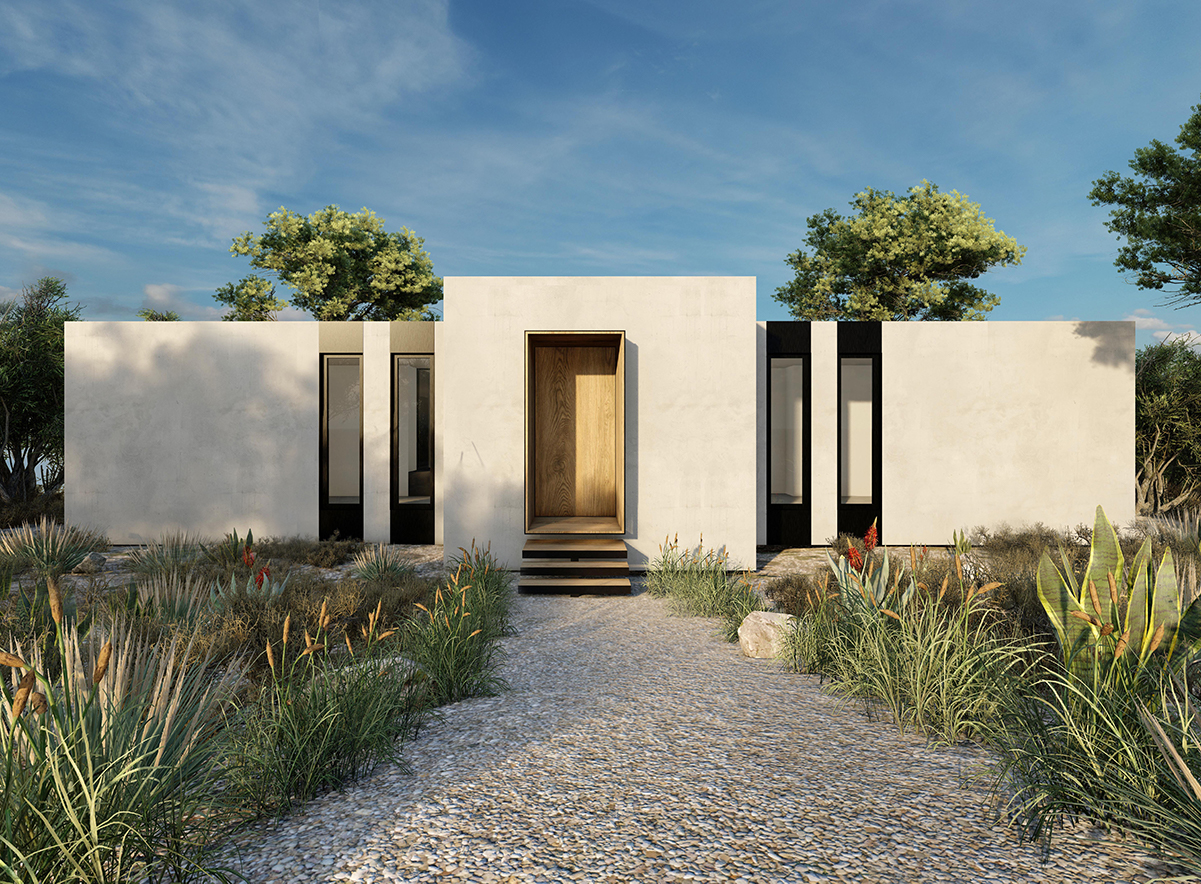
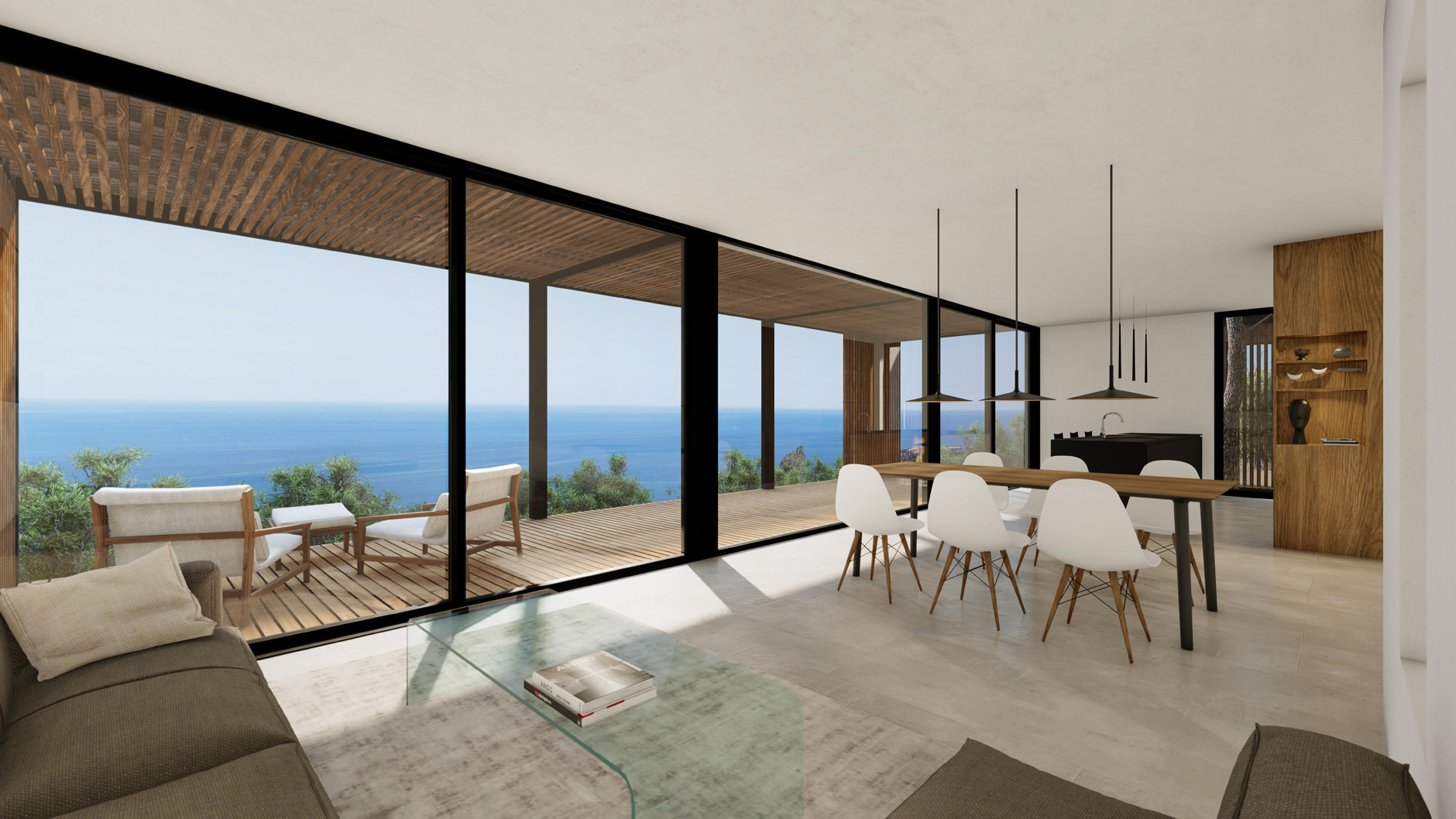
Visualisations of the Z1 House
